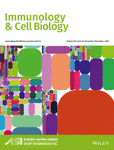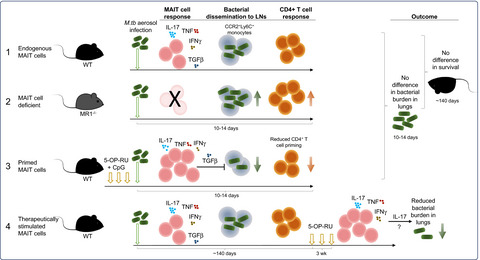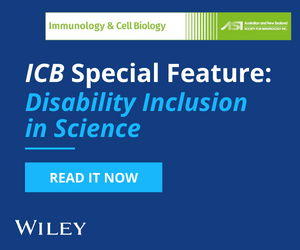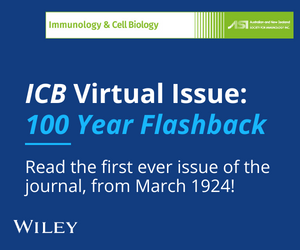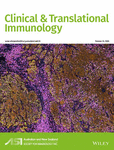Journal list menu
Export Citations
Download PDFs
Issue Information
EDITORIAL
Immunology & Cell Biology Publication of the Year Awards 2019
- Pages: 796-797
- First Published: 02 November 2020
NEWS AND COMMENTARIES
NKG7 – regulating endosomal pathways?
- Pages: 802-804
- First Published: 05 October 2020
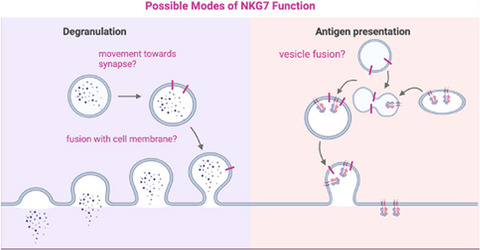
Ng et al. have identified NKG7 as a regulator of inflammation in response to diverse immunological challenges. While NKG7 was required for the degranulation of cytotoxic cells, additional defects including reduced expansion and trafficking of CD8 T cells, and altered antigen presentation, were noted in NKG7-deficient mice. The precise mechanism by which NKG7 mediates its effects has not been resolved but may involve regulation of endosomal vesicle trafficking.
SPECIAL FEATURE: Snapshots from Lorne Infection and Immunity 2020
EDITORIAL
10th Lorne Infection and Immunity Conference 2020
- Pages: 805-806
- First Published: 22 November 2020
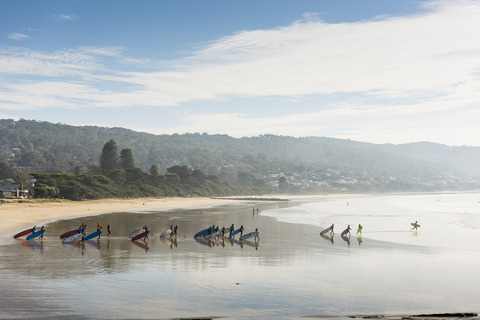
The December 2020 issue contains a Special Feature on Infection and Immunity, featuring selected presentations from the 10th Lorne Infection and Immunity Conference. The breadth and excellence of science presented at this meeting is encompassed by the articles in this issue by Lamiable et al., Saunders et al. and Chua et al.
REVIEWS
Dendritic cells in Th2 immune responses and allergic sensitization
- Pages: 807-818
- First Published: 01 August 2020
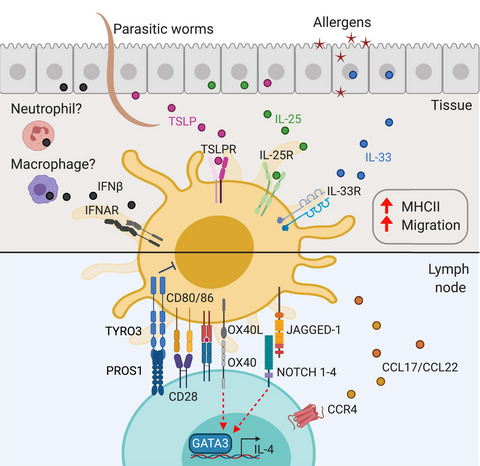
The process that leads to the activation of T-helper type 2 (Th2) cells in vivo is incompletely understood: while it has become clear that “conventional” dendritic cells are essential antigen-presenting cells for the initiation of Th2 immune responses, the molecules that are expressed by dendritic cells exposed to allergens, and the mediators that are produced as a consequence and signal to naïve CD4+ T cells to promote their development into effector Th2, remain to be defined. Here we summarize recent developments in the identification of the dendritic cell subsets involved in Th2 responses, and the direct and indirect signals that condition dendritic cells to drive the development of Th2 responses.
Surveying purine biosynthesis across the domains of life unveils promising drug targets in pathogens
- Pages: 819-831
- First Published: 04 August 2020

Purines play an integral role in cellular processes such as energy metabolism, cell signaling and encoding the genetic makeup of all living organisms —ensuring that the purine metabolic pathway is maintained across all domains of life. To gain a deeper understanding of purine biosynthesis via the de novo biosynthetic pathway, the genes encoding purine metabolic enzymes from 35 archaean, 69 bacterial and 99 eukaryotic species were investigated. By surveying purine metabolism across all domains of life we have identified important features of the purine biosynthetic pathway that can be exploited as prospective drug targets.
Immunometabolism of Leishmania granulomas
- Pages: 832-844
- First Published: 11 August 2020
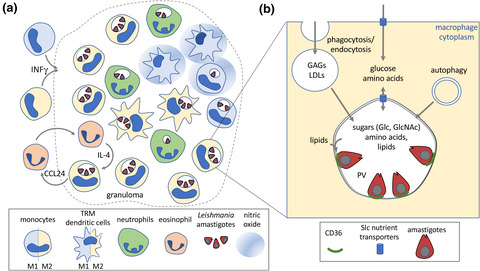
Microbial pathogens, such as Leishmania, induce macrophage-rich granulomatous lesions that can alternatively promote parasite growth or be host protective. This review summarizes how changes in macrophage polarization and metabolic reprogramming within granulomas impact on Leishmania growth and determine the outcome of infection.
REVIEW
CC chemokine receptor 6 (CCR6) in the pathogenesis of systemic lupus erythematosus
- Pages: 845-853
- First Published: 07 July 2020
ORIGINAL ARTICLES
Toll-like receptor 2 activation induces C–C chemokine receptor 2-dependent natural killer cell recruitment to the peritoneum
- Pages: 854-867
- First Published: 22 July 2020
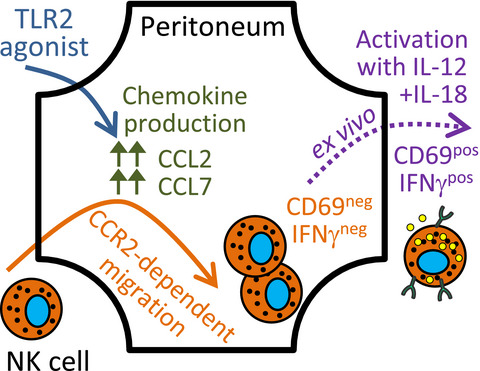
In this study, we showed that induction of inflammation in the peritoneal cavity by Toll-like receptor 2 (TLR2) agonists induces chemokine production with very high levels of the CCR2 ligands CCL2 and CCL7. Natural killer (NK) cells are recruited to the peritoneum after TLR2-induced inflammation in a CCR2-dependent manner, but do not acquire an activated phenotype. Recruited NK cells can be activated by interleukin (IL)-12 and IL-18 to express CD69 and interferonγ.
Specific macrophage subsets accumulate in human subcutaneous and omental fat depots during obesity
- Pages: 868-882
- First Published: 22 July 2020
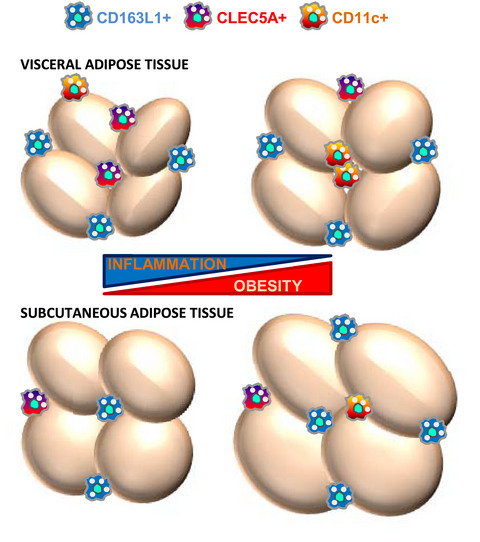
Human visceral and subcutaneous white adipose tissues seem to limit inflammation during obesity by differentially altering their macrophage subset composition. In the obese visceral tissue the inflammatory CLEC5A+ macrophage subset diminishes its counts, whereas a CD11c+ with a mixed M1/M2 phenotype is expanded. Subcutaneous adipose tissue expansion is dominated by a subset of M2-like macrophages, with a minor contribution of an M1-like subpopulation.
The use of patient-derived breast tissue explants to study macrophage polarization and the effects of environmental chemical exposure
- Pages: 883-896
- First Published: 26 July 2020
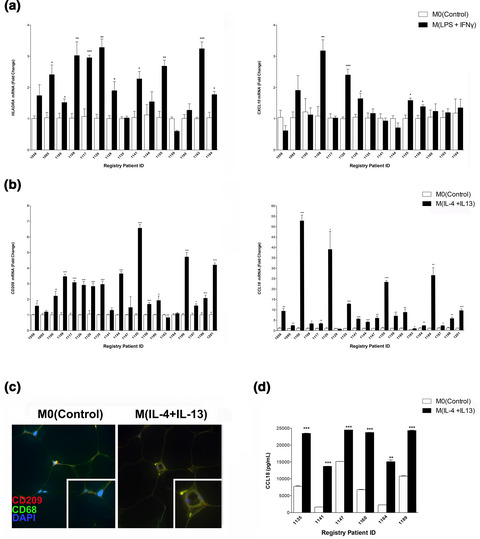
The intact human mammary tissue, termed patient-derived explant (PDE), can be used to investigate cellular responses to a wide variety external stimuli in situ. For this study, we examined the impact of cytokines or environmental chemicals on macrophage phenotypes. We demonstrate that we can polarize macrophages within human breast tissue PDEs toward M1 or M2 and the endocrine-disrupting chemical, benzophenone-3, also affects macrophage polarization.




